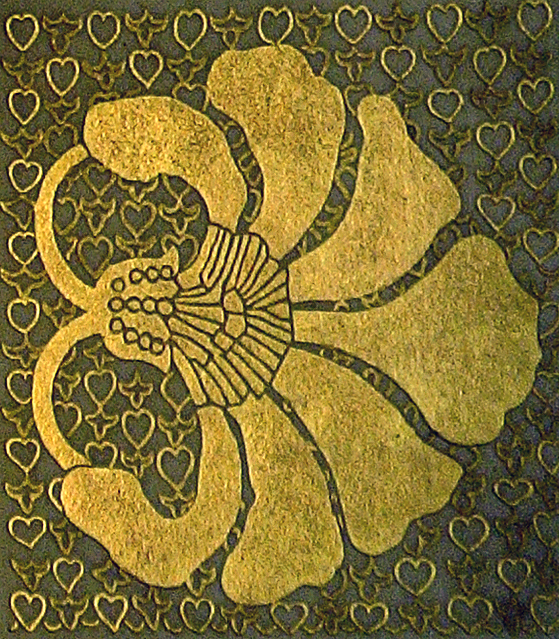 Sarah Wyman Whitman: The Life She Led
Sarah Wyman Whitman: The Life She Led
Jess Bailot
Sarah Wyman Whitman was born in 1842 in the city of Lowell, Massachusetts. She and her family moved to Baltimore, Maryland, when she was three years old. During her time in Baltimore, Whitman experienced a world of culture with her relatives. Moving back to Lowell in 1853 at age eleven, tutors educated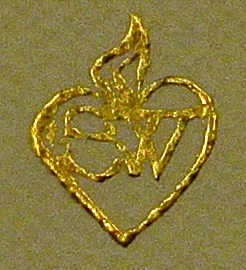 Whitman. At such an early age, she developed a passion for learning. This passionate personality would soon become one of the pioneers in equal opportunity and education for women.
Whitman. At such an early age, she developed a passion for learning. This passionate personality would soon become one of the pioneers in equal opportunity and education for women.
After she married wealthy wool merchant Henry Whitman, Whitman moved from Lowell to Boston. Her home at 77 Mount Vernon Street, Boston, in the Beacon Hill area, since 1936 has served at the location of the literary and academic society known as the Club of Odd Volumes. She immersed herself in all Boston had to offer, eventually becoming a prominent book designer. Whitman attended the first art classes taught through the Boston Museum of Fine Arts. William Morris Hunt taught her from 1868 to 1871. Whitman also ventured to Villiers-le-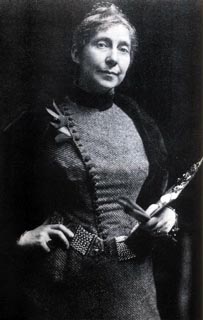 Bel, Paris, twice to study art under Hunt’s old teacher, Thomas Couture, in 1877 and 1879. Whitmans’ paintings show the tradition of landscape and portraiture form this time.
Bel, Paris, twice to study art under Hunt’s old teacher, Thomas Couture, in 1877 and 1879. Whitmans’ paintings show the tradition of landscape and portraiture form this time.
Whitman made a name for herself by working with artist John La Farge on a carpet design for Trinity Church in Boston in 1884. That same year, Whitman received a commission by Helen B. Merriman,![]() wife of Pastor Merriman, for the First Congregational Church in Worcester, Massachusetts. Apparently, the pastor, Daniel Merriman had reached out to La Farge, but given his occupation with other projects, the artist recommended Whitman, with whom Helen Merriman had taken lessons at the Museum of Fine Arts. The interior of the church, as noted in correspondence of the time was supported by the generosity of the Merriman’s and by the work donated by Whitman (“Touch of Artist Seen,” Worcester Telegram, January 26, 1908). Whitman later not only received other stained glass commissions, but also opened her own studio, the Lily Glass Works at 184 Boylston Street (at Charles Street, across from the Boston Common). Another important friend she made during her artistic evolution was Martin Brimmer, founding director of the Museum of Fine Arts. Brimmer and Whitman shared a correspondence as well as honest opinions about art and life. He often turned to Whitman for help with exhibitions at the museum.
wife of Pastor Merriman, for the First Congregational Church in Worcester, Massachusetts. Apparently, the pastor, Daniel Merriman had reached out to La Farge, but given his occupation with other projects, the artist recommended Whitman, with whom Helen Merriman had taken lessons at the Museum of Fine Arts. The interior of the church, as noted in correspondence of the time was supported by the generosity of the Merriman’s and by the work donated by Whitman (“Touch of Artist Seen,” Worcester Telegram, January 26, 1908). Whitman later not only received other stained glass commissions, but also opened her own studio, the Lily Glass Works at 184 Boylston Street (at Charles Street, across from the Boston Common). Another important friend she made during her artistic evolution was Martin Brimmer, founding director of the Museum of Fine Arts. Brimmer and Whitman shared a correspondence as well as honest opinions about art and life. He often turned to Whitman for help with exhibitions at the museum.
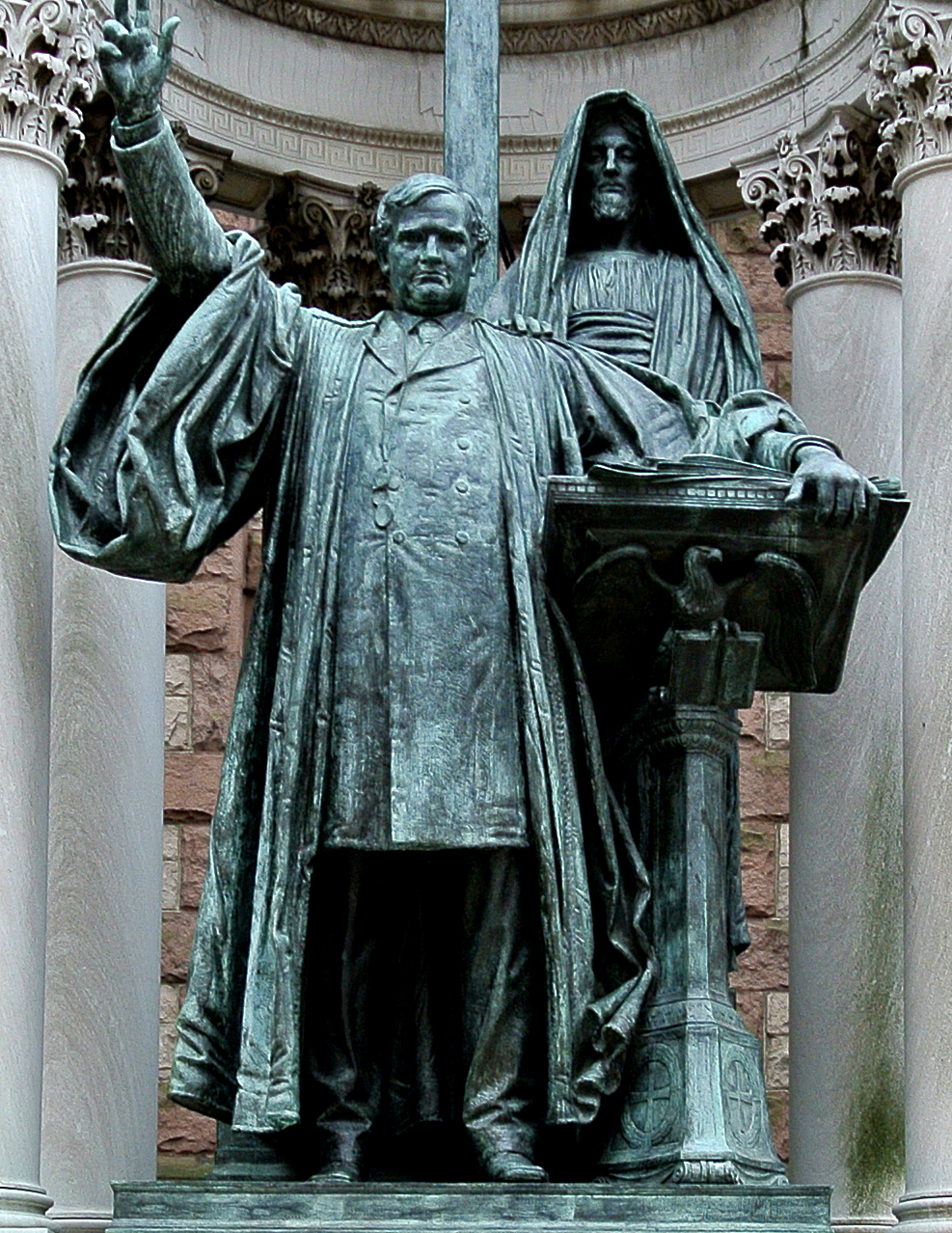 Whitman’s involvement with Trinity Church not only helped with her artistic career, but also represented the place where she began her work for others. For thirty years (1874-1904), Whitman taught the adult Bible class, consisting mostly of women, from November to Easter. She became well acquainted with the charismatic preacher Phillips Brooks, rector from 1868 to 1893. Brooks was an eloquent voice for the Broad Church Movement in the Episcopal Church, a direction stressing inclusion and tolerance, sentiments shared by Sarah Whitman. In 1879 the Whitman’s purchased a summer retreat in Beverly Farms, Massachusetts. Sarah became aware that the local Baptist church did not have a Sunday school program and swiftly organized Friends’ Bible class after service. She continued to teach there in the summer, combining fundraising techniques for both Trinity and Beverly in order to raise money. Eventually, there were enough funds for a library and reading room, meant especially for the youth and elderly.
Whitman’s involvement with Trinity Church not only helped with her artistic career, but also represented the place where she began her work for others. For thirty years (1874-1904), Whitman taught the adult Bible class, consisting mostly of women, from November to Easter. She became well acquainted with the charismatic preacher Phillips Brooks, rector from 1868 to 1893. Brooks was an eloquent voice for the Broad Church Movement in the Episcopal Church, a direction stressing inclusion and tolerance, sentiments shared by Sarah Whitman. In 1879 the Whitman’s purchased a summer retreat in Beverly Farms, Massachusetts. Sarah became aware that the local Baptist church did not have a Sunday school program and swiftly organized Friends’ Bible class after service. She continued to teach there in the summer, combining fundraising techniques for both Trinity and Beverly in order to raise money. Eventually, there were enough funds for a library and reading room, meant especially for the youth and elderly.
In a letter that she wrote to Richard C. Cabot, pioneering hematologist at Massachusetts General Hospital she expressed: “it is not self-conquest but self-surrender that holds the divinest glory of heroes, a loss of one’s self in others” (typescript of address by Richard C. Cabot, M.D.. June 19, 1912, Radcliffe Archives, Schlesinger Library). Whitman’s work for the church led her into working for many causes and organizations. From 1885 to 1904 she served as the first woman on the Council School for the Museum of Fine Arts. Whitman became an honorary member of the Art Student’s Association, known today as the Copley Society. In 1886 she published the guide The Making of Pictures with the Interstate Publishing Company, Chicago. The cover she designed bore the Latin inscription: si tibi opus est meo labore non recuso laborem (If you need my labor, I do not withhold it), the same inscription that would appear in the Brimmer window of 1896 in the transept of Harvard’s Memorial Hall. The short book addresses young students in both practical and inspiration words. In 1887 she began the Boston Water Color Club for women, rivaling the Boston Society of Water Color Artists, which was for men only. From 1897 to 1904 she served as a charter member of the Arts and Crafts in Boston, inducted as Vice President on June 28th. She served on several committees, their jury, and planned the annual “Fancy Dress Party” at the Arts Festival.
Whitman’s passion for art and religion did not diminish her commitment to education. She believed that “women could raise themselves to a more secure position and find their place in life” with higher education. Whitman became a member of the Executive Committee of Society for Collegiate Institute of Women of Harvard College. She met Elizabeth Cary Agassiz through her involvement with Harvard. Agassiz became a confidant and mainstay in Whitman’s life. Whitman sent Agassiz to Philadelphia to interview the first dean of Radcliffe Institute for Women, Agnes Irwin . In 1894 Whitman became a member of the Council of Radcliffe College and Chairman of the House Committee. She then became involved with the Association and Council of Radcliffe up until her death.
Her last endeavor is her work with civil service. Whitman became the first President of the Women’s Auxiliary for the troops in Boston, most of which she organized. She spoke to women’s clubs and within her circle of friends. She last appeared at a talk to a ladies’ club on May 16, 1904.
Diagnosed with heart disease in 1901, she still maintained her hectic schedule until forced to enter Massachusetts General Hospital. She succumbed to pneumonia on June 25, 1904. The major beneficiaries of her will included the Museum of Fine Arts and Radcliffe Institute with $100,000.00 each. Whitman’s commitment to ameliorating racial intolerance is attested by her leaving half the amount she left Radcliffe, $50,000.00, to Tuskegee University, in Alabama founded in 1881 by Booker T. Washington as the Tuskegee Normal School for Colored Teachers. She also gave $2,000.00 to Berea College, in Kentucky, which had been founded by abolitionists.
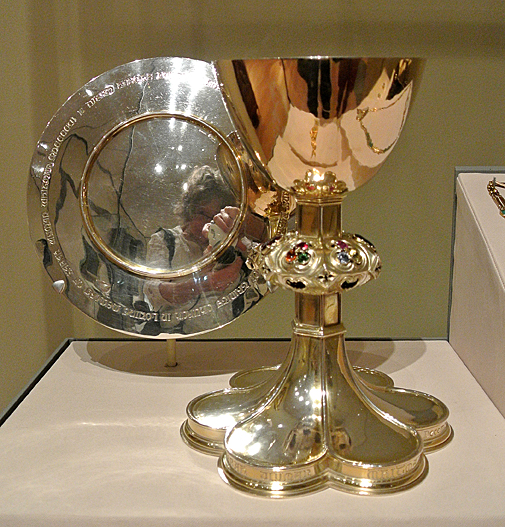 Her posthumous recognition includes:
Her posthumous recognition includes:
1904: July 17th- Memorial Service held at Beverly Farms. Radcliffe purchases one of her windows for the World’s Fair.
1905: Chalice and Paten given in Whitman’s name to Trinity Church: designed by R. Clipston Sturgis in a Gothic style and fabricated by Arthur Stone, Gardner MA.
1905: Boston’s Society of Arts and Crafts organizes a memorial exhibition of her book covers and stained glass.
1906: Museum of Fine Arts hosts an exhibit of her pastel and oil works, with a paten for a chalice given by members of her Bible Class at Trinity.
1907: Sarah Orne Jewett publishes a collection of letters by Sarah Wyman Whitman, entitled Manibus O Date Lilia Plenis;
A phrase from Virgil’s Aeneid VI.883 meaning “Give lilies from full hands.”
1912: the third residence hall at Radcliffe College named the Whitman Dorm.
1923: Women’s City Club (founded in 1912) displays her paintings, describing her as someone “who was a prominent figure some years ago.”
Further Reading
Boulos, Patricia. In Stanley Ellis Cushing and David B. Dearinger, eds., Acquired Tastes: 200 Years of Collecting for the Boston Athenæum (2006): 360-362.
Brandt, Beverly K. The Craftsman and the Critic: Defining Usefulness and Beauty in Arts and Crafts Era-Boston. Sheridan Books, Inc. 2009.
Jewett, Sarah Orne. Manibus O Date Lilia Plenis. Riverside Press, Cambridge. 1907.
Hirshler, Erica E., In James F. O’Gorman, “The Makers of Trinity Church in the City of Boston.” University of Massachusetts Press. 2004.
Raguin, Virginia, ed., “Sarah Wyman Whitman 1842-1904: The Cultural Climate in Boston.” Worcester MA, 1993 (student papers at the College of the Holy Cross)
Smith, Betty S. “Sarah Wyman Whitman”. Harvard Magazine. Jan- Feb 2008.
Smith, Betty S. “Sarah Wyman Whitman Papers.” Radcliffe Archives.
Smith, Bonnie. “Sarah Wyman Whitman”. Boston Women’s Heritage Trail. 2001.
Whitehill, Walter Muir. Museum of Fine Arts, Boston: A Centennial History. Cambridge, MA: Belknap Press/Harvard University, 1970.